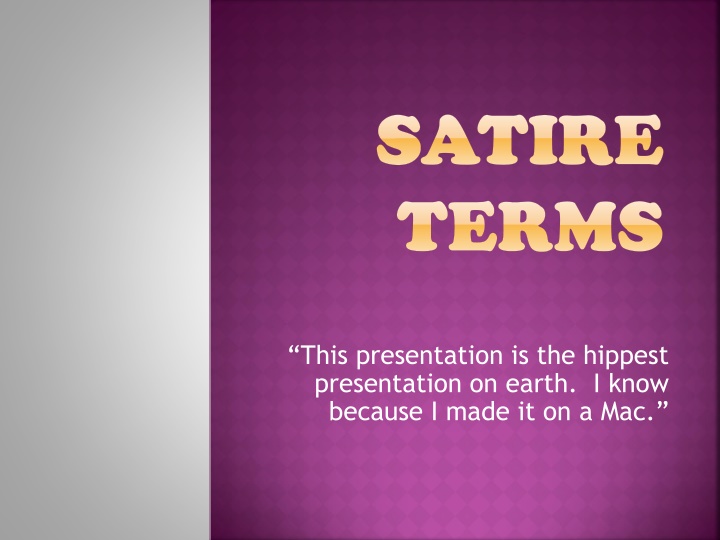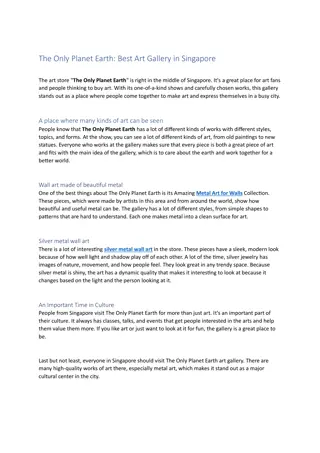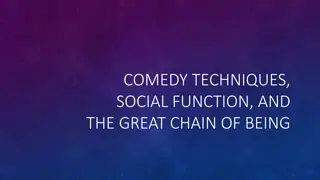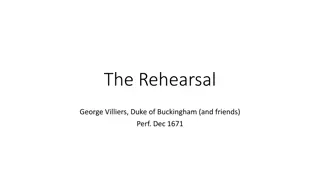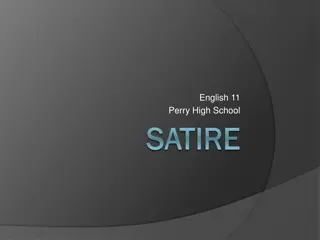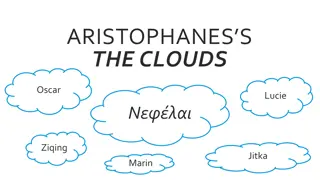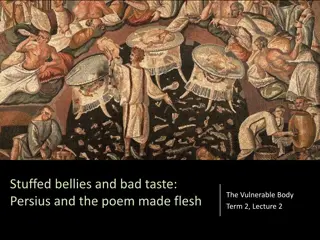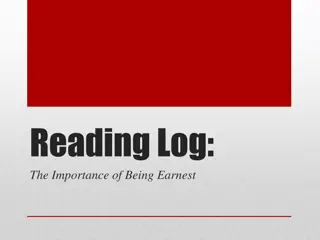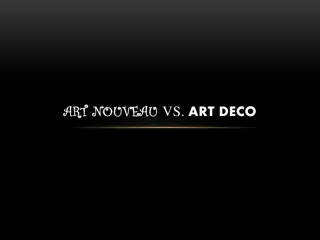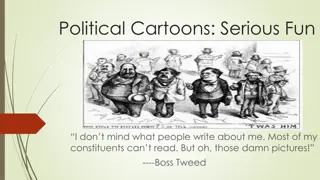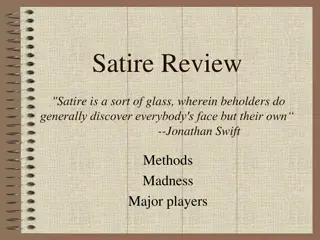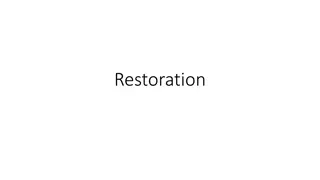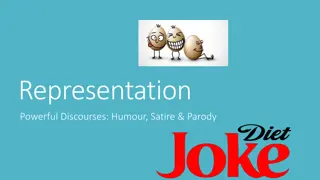Unveiling the Art of Satire: Types and Techniques
Delve into the world of satire with this presentation exploring the types of satire such as Juvenalian and Horatian, along with elements like hyperbole, incongruity, and reversal. Discover how satire is used as a literary technique to mock human vices and learn about the humor and criticism it conveys. Explore examples of parody and sarcasm, and unravel the complexities of this powerful form of expression.
Uploaded on Sep 13, 2024 | 1 Views
Download Presentation

Please find below an Image/Link to download the presentation.
The content on the website is provided AS IS for your information and personal use only. It may not be sold, licensed, or shared on other websites without obtaining consent from the author.If you encounter any issues during the download, it is possible that the publisher has removed the file from their server.
You are allowed to download the files provided on this website for personal or commercial use, subject to the condition that they are used lawfully. All files are the property of their respective owners.
The content on the website is provided AS IS for your information and personal use only. It may not be sold, licensed, or shared on other websites without obtaining consent from the author.
E N D
Presentation Transcript
SATIRE SATIRE TERMS TERMS This presentation is the hippest presentation on earth. I know because I made it on a Mac.
SATIRE a literary technique used to ridicule or make fun of human vice or weakness often with the intent of correcting or changing the subject of the attack
TYPES OF SATIRE Juvenalian Horatian
JUVENALIAN SATIRE After the Roman satirist Juvenal Formal satire in which the speaker attacks vice and error with contempt and indignation Juvenalian satire in its realism and its harshness is in strong contrast to Horatian satire.
HORATION SATIRE After the Roman satirist Horace Satire in which the voice is indulgent, tolerant, amused, and witty. The speaker holds up to gentle ridicule the absurdities and follies of human beings Aims at producing in the reader not the anger of a Juvenal, but a wry smile.
ELEMENTS OF SATIRE Juxtaposition Irony Understatement Double Entendre Hyperbole Incongruity Reversal Parody Sarcasm
HYPERBOLE To over exaggerate the situation beyond its normal bounds, so it becomes ridiculous Enlarge or increase size as well Example: I m starving. I could eat a horse.
INCONGRUITY To present things that are out of place or are absurd in relation to its surroundings. Example: Princess Fiona uses ponytail to knock out Merry Men, pauses mid-flight to fix her hair.
REVERSAL To present the opposite of the normal order e.g. the order of events, hierarchical order Example: Fiona saves Shrek (women are supposed to be damsels, not men)
PARODY To imitate the techniques and/or style of some person, place, or thing. Robin Williams doing impressions Dressing up at President Bush and talking like him
SARCASM is stating the opposite of an intended meaning especially in order to sneeringly, slyly, jest or mock a person, situation or thing Example: That s cool. (when you actually hate it) Talking about how much you think a candidate is doing a good job in a mocking tone Oscar Wilde wrote, I am not young enough to know everything.
JUXTAPOSITION an act or instance of placing close together or side by side, esp. for comparison or contrast. Example: Humanitarians Brittney Spears and Mother Teresa
IRONY the use of words to convey a meaning that is the opposite of its literal meaning the irony of her reply, How nice! when I said I had to work all weekend. Sideshow Bob, I'm aware of the irony of appearing on TV in order to decry it."
DOUBLE ENTENDRE A play on words a word or expression capable of two interpretations with one usually risqu Iraqi Head Seeks Arms Plane Too Close to Ground, Crash Probe Told Saying in response, That s what she said. YOU MAY NOT USE DOUBLE ENTENDRE IN YOUR PROJECTS OR DURING CLASS! WE DISCUSS IT ONLY SO THAT YOU KNOW IT S THERE!
UNDERSTATEMENT is used to make something appear smaller or less important than it really is. It can be used to entertain or to reduce the importance of the truth. Example: It s just a flesh wound. (Black Knight in Holy Grail when his arm has fallen off)
